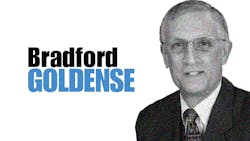Roadmap Your Way to R&D-Product Development Innovation
This file type includes high resolution graphics and schematics when applicable.
Intestinal fortitude for innovation is on the decline in most industries. The lackluster economy has made many companies skittish to embrace risk in their product portfolios. How bad has it become? In the 1990s, almost 60% of R&D budgets were allocated to New-To-The-World, New-To-The-Market, and New Product Lines (Robert G. Cooper, Reference Paper #46: "Creating Bold Innovation In Mature Markets"). Today, that number is below 40%.
Nielsen recently did a study of innovative products, the "Nielsen Breakthrough Innovation Report," published in June 2015. It examined 3,522 initiatives and identified 12 "Breakthrough Winners." Ten of the winners were edibles of some type. Other winners included Duracel’s Quantum battery and Paris' Advanced Haircare from L’Oreal. What happened to all the other categories of products you and I buy? For the time being, the innovation tent has been rolled-up in most industries.
Alas, 30 years of corporate focus on the bottom line has left many companies challenged when it comes to attacking top-line initiatives with confidence. How will companies overcome the current conundrums of flat to small revenue growth and shrinking profits that have been pervasive for the past few years? Perhaps "roadmaps" might help instill the confidence necessary to once again take on additional risk.
After all, the USA suffered a great blow in the late 1980s when just about all manufacturing industries laid off a third of their work force, and then financial industries did the same thing in the early 1990s. A few years later came the unparalleled innovation boom of the late 1990s. There is no reason it can't happen again, except a lack of courage.
Roadmapping, a "look forward" approach coined in the 1980s, took a number of years to catch on. Some might say it is still in the process of catching on. Prescriptive instructions on how to do roadmaps are hard to come by as every company, at this level of thinking and abstraction, is truly unique. On the flip side, if everyone used the same prescriptive process, there would be no opportunity for competitive advantage.
In a recent column, I discussed the need for companies to manage four distinct but integrated portfolios. The best practice is to use four multi-year roadmaps, of the same names, to create those four portfolios.
Portfolios are snapshots of a company's assets and offerings at a specific point in time. Roadmaps provide the direction and detail necessary to move from one portfolio snapshot to the next desired incarnation of the portfolio. By taking the time to think through, document, and review the pathway to the future at a detailed level, company leaders may gain the confidence needed to take the courageous step to invest more monies in innovative and breakthrough products. It has happened before. It can happen again.
This file type includes high resolution graphics and schematics when applicable.
About the Author
Bradford Goldense
Contributing Technical Expert
Bradford L. Goldense is founder and president of Goldense Group, Inc. [GGI] (www.goldensegroupinc.com), a consulting, market research, and education firm focused on business and technology management strategies and practices for product creation, development, and commercialization. He has been an adjunct faculty member of the graduate engineering school at Tufts University's Gordon Institute for 19 years. Goldense is a Certified New Product Development Professional [NPDP], a Certified Manufacturing Engineer [CMfgE], a Certified Computer Professional [CCP], and is Certified In Production & Inventory Management [CPIM]. He holds over 200 registered copyrights and is a recognized subject-matter expert, including appearances on PBS and CNBC. He has consulted to over 250 companies and over 750 manufacturing locations on four continents since founding GGI in 1986. Goldense holds an MBA in Accounting from the Cornell Johnson School and a BSCE from Brown University. For more information, please see Brad's LinkedIn profile or visit GGI's home page.



